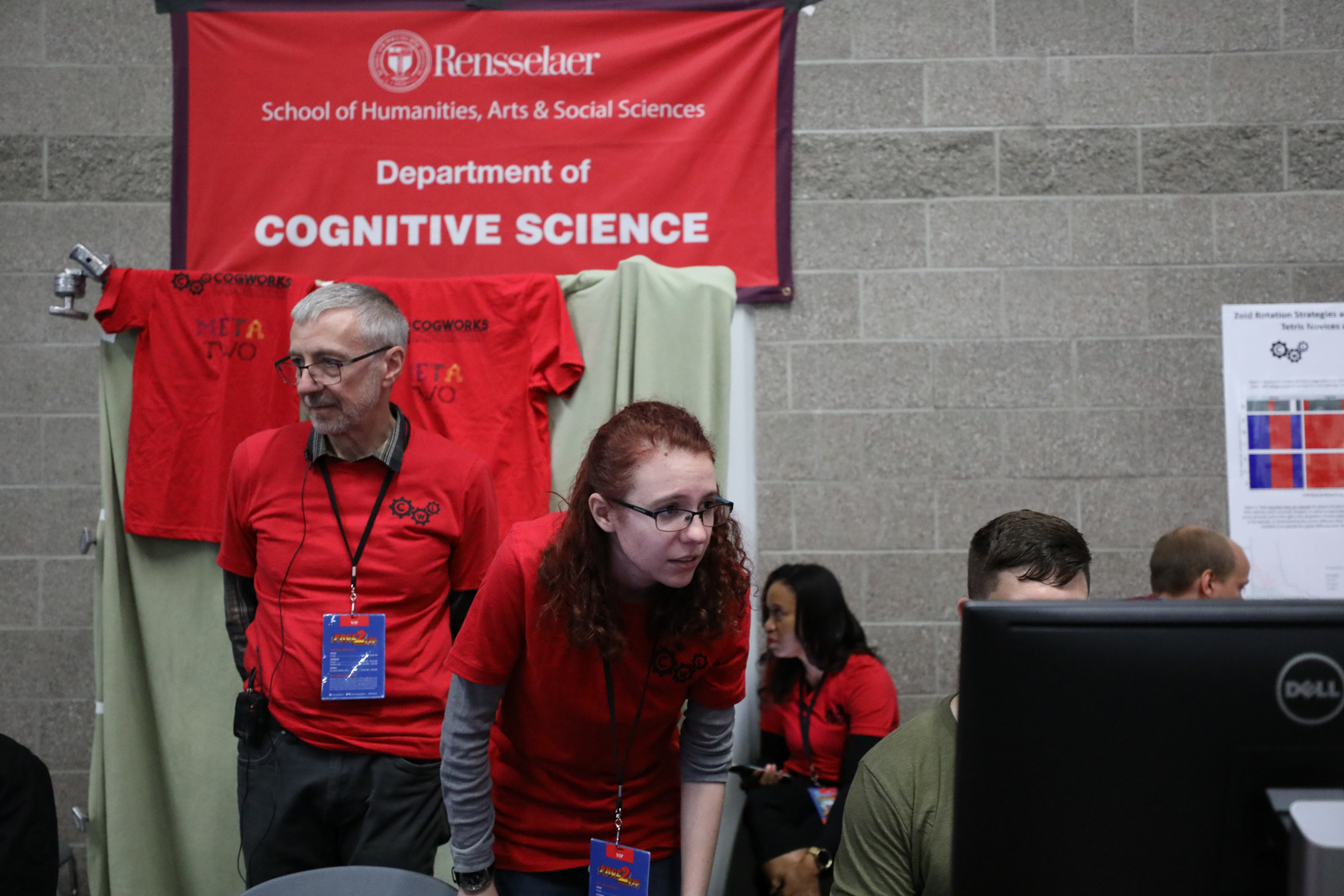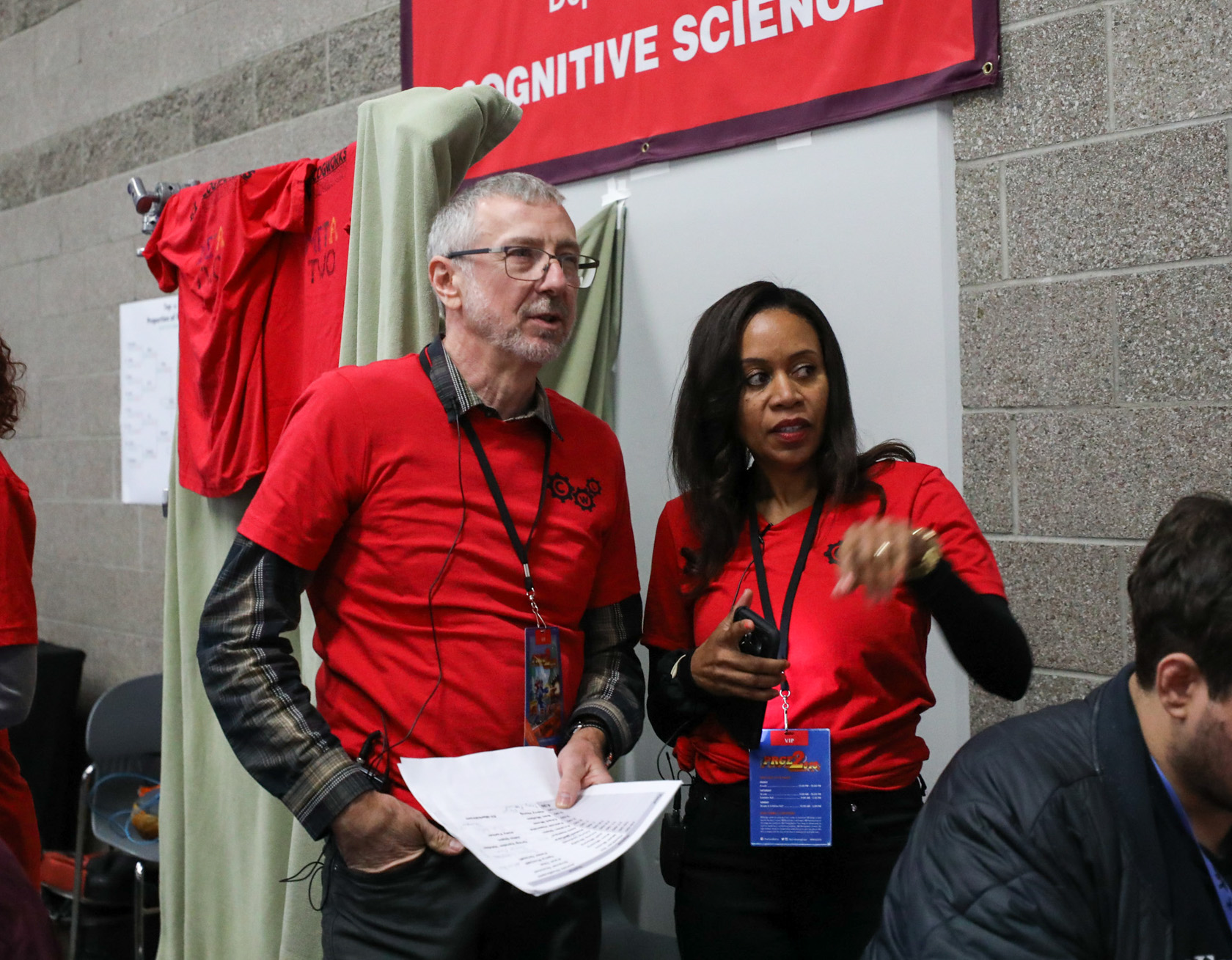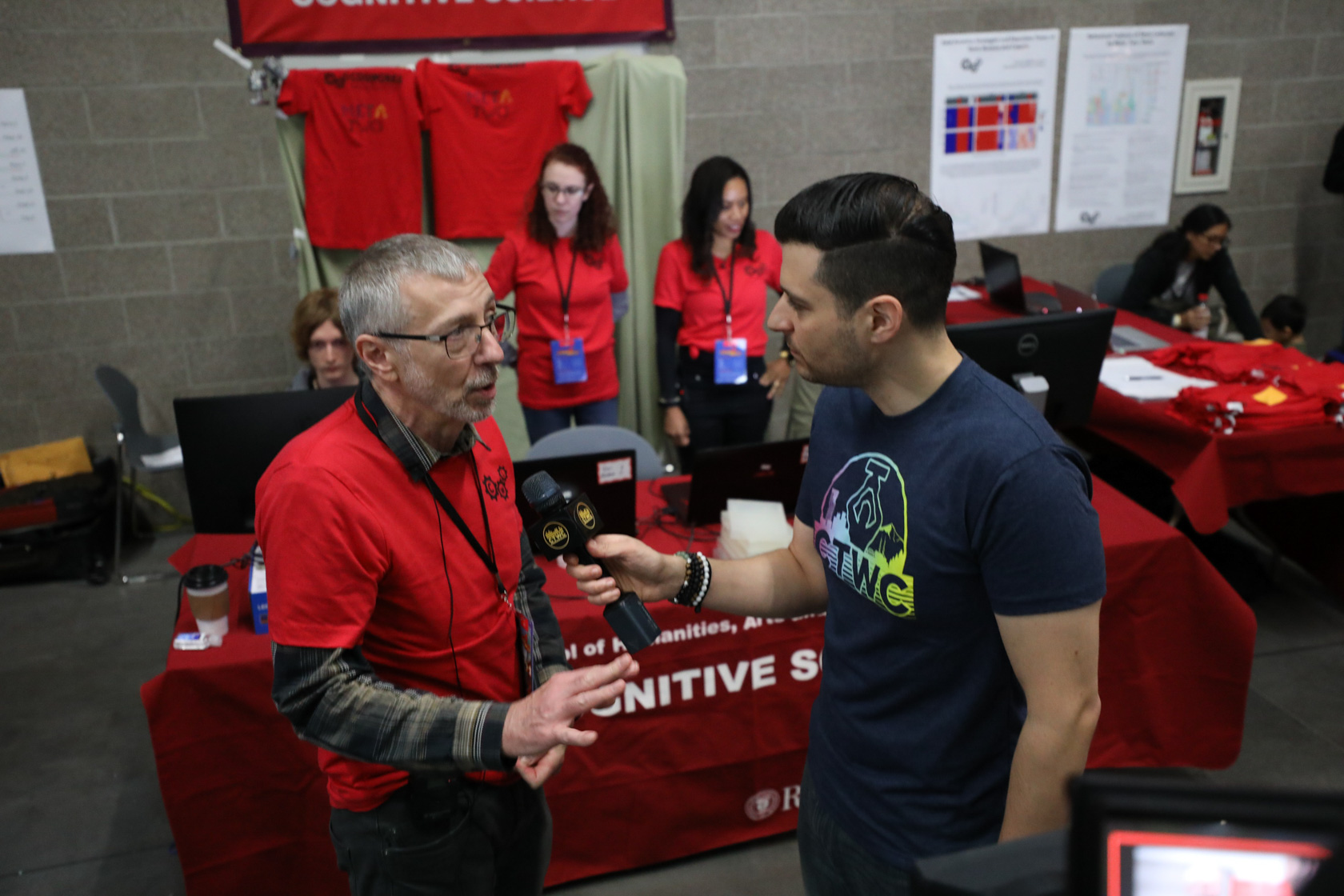Harnessing the Power of Retro Skill
to Advance Future Science
at the 2018 Classic Tetris World Championship
Photos and text by Anthony Hornof
of the University of Oregon
Sunday, October 21, 2018
On Saturday, October 20, 2018, Professor Wayne Gray, Post Doc Jacquelyn Berry, and Ph.D. Student Catherine Sibert, all of the Department of Cognitive Science at Rensselaer Polytechnic University (RPI) ran a controlled scientific experiment in which they captured the perceptual-motor expertise of the world's top Tetris players. Studying this population accomplishing this task provides a unique opportunity to explore the optimal cognitive strategies that humans can establish in well-defined tasks that require fast and accurate perceptual evaluation, decision-making, and motor responses. To recruit the best humans with truly optimal performance in this task, Dr. Gray and colleagues transported a portable laboratory from Troy, New York, to Portland, Oregon, and set up the laboratory on the edge of the 2018 Classic Tetris World Championship, which itself occupies a corner of the chaotic and exciting Portland Retro Gaming Convention.
(Click on the photos to enlarge.)
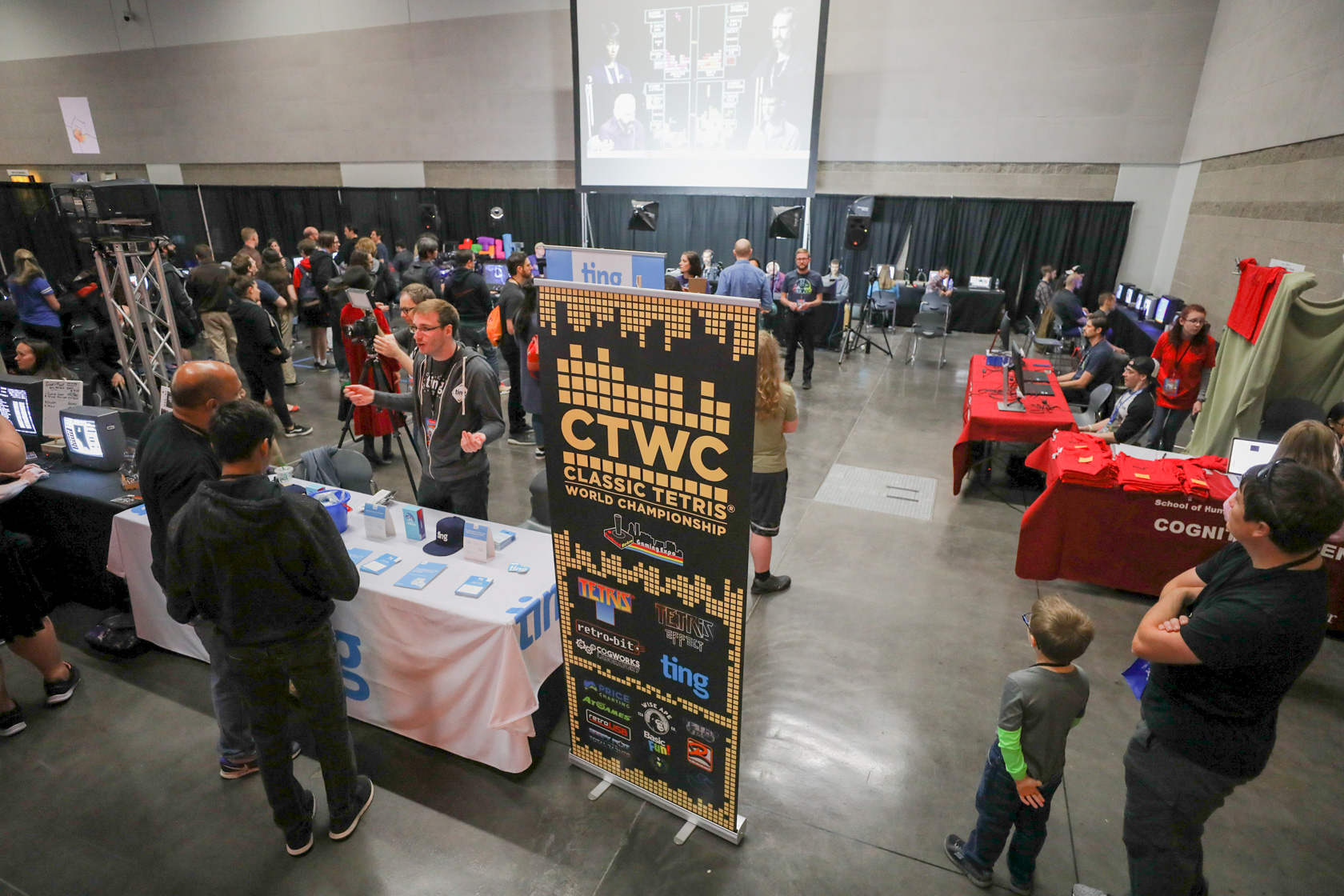
The 2018 Classic Tetris World Championship was held in one corner of the Portland Retro Gaming Convention.
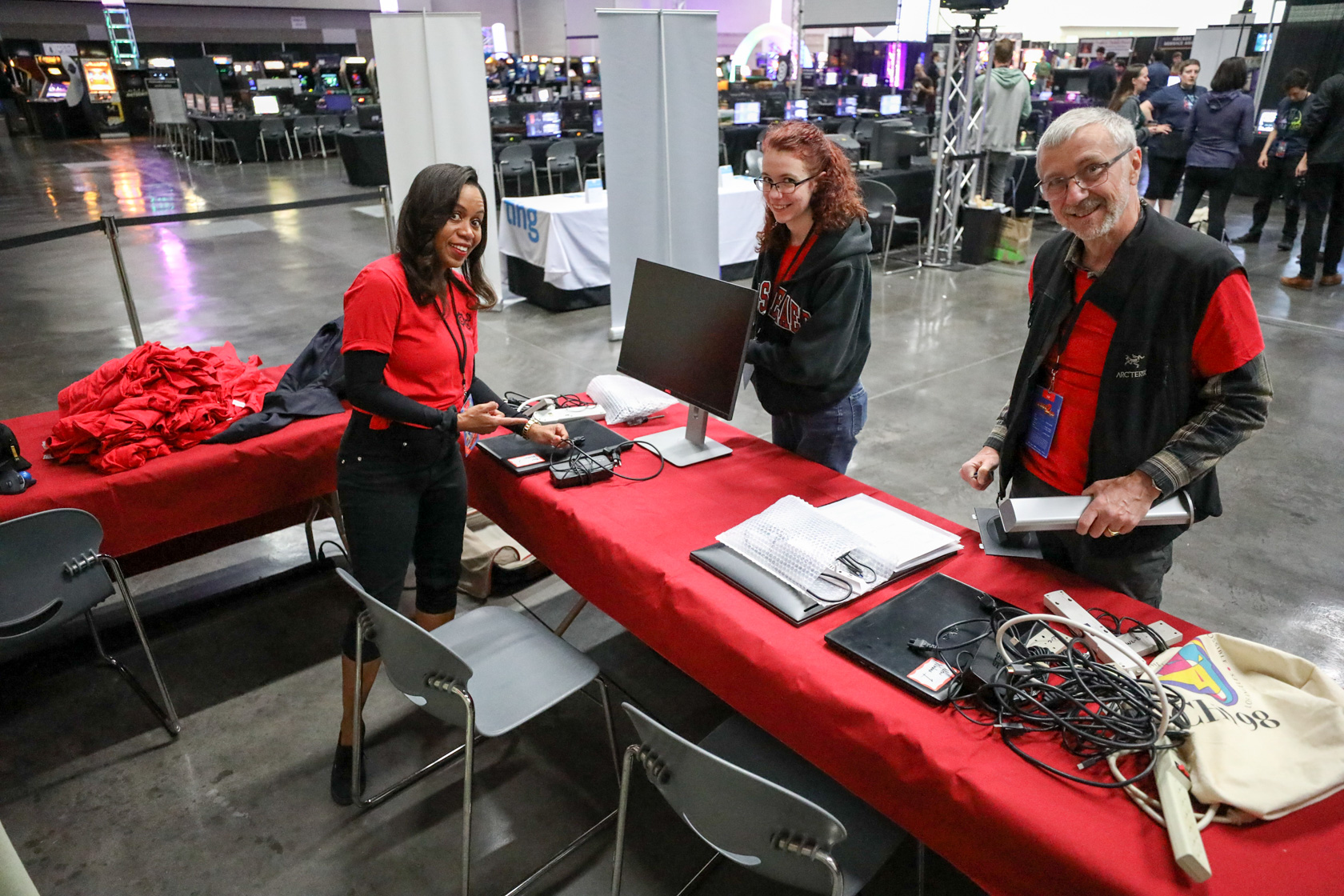
Dr. Berry, Catherine, and Dr. Gray showed up early to set up their scientific instrumentation and data collection center.
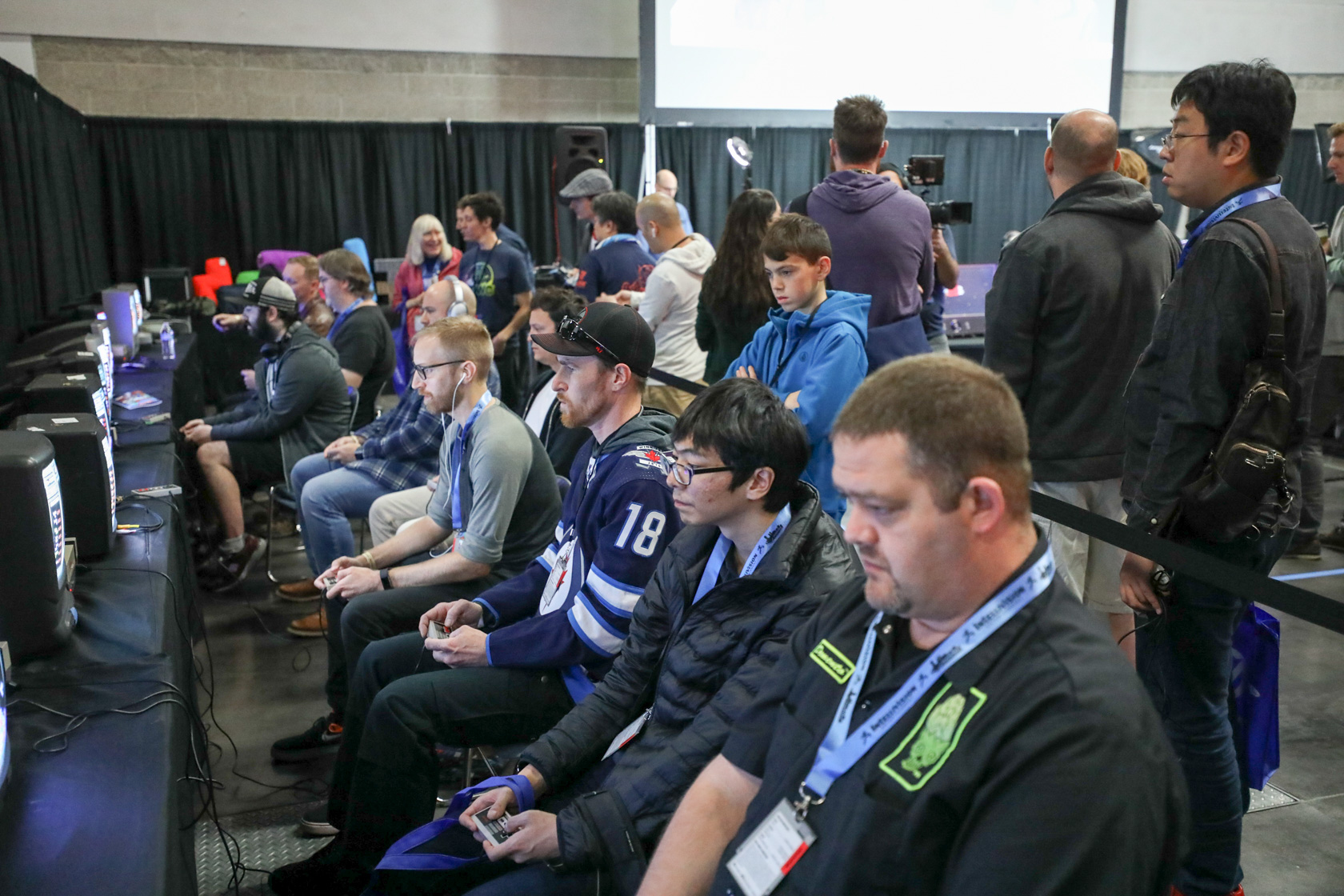
First, let us explain the context in which this experiment was conducted. The annual Classic Tetris World
Championship starts with a qualifying day in which competitors attempt to make the final bracket
of forty or so players who compete the next day. Here, players work at getting a high score to
make it into the final bracket. Many
gaming consoles are set up for the event. All are original Nintendo consoles
from the 1980s.
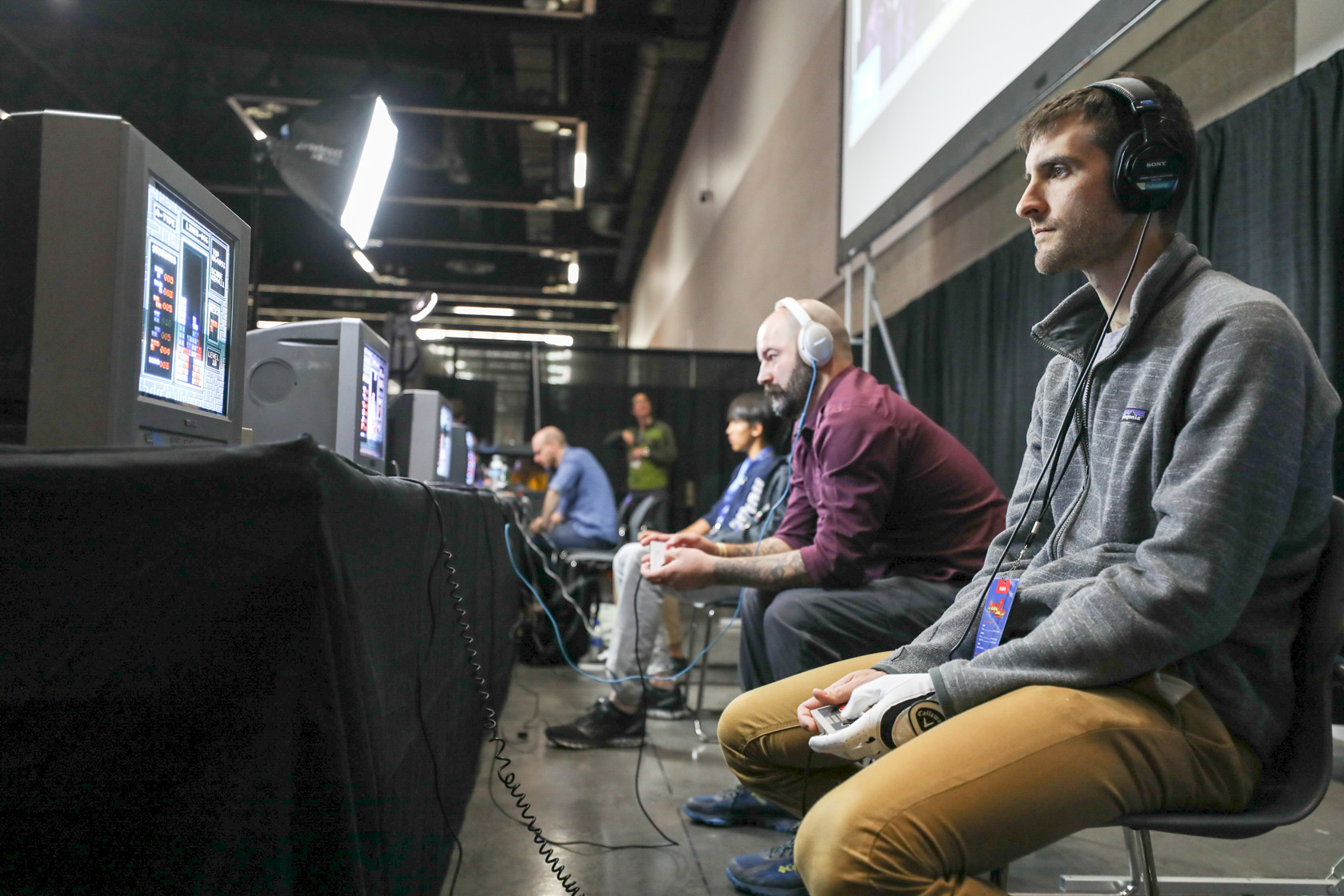
Established top players must qualify like everyone else, but they typically do so
in one of four stations from which their performance, and faces, are projected
on a big screen for all to see.
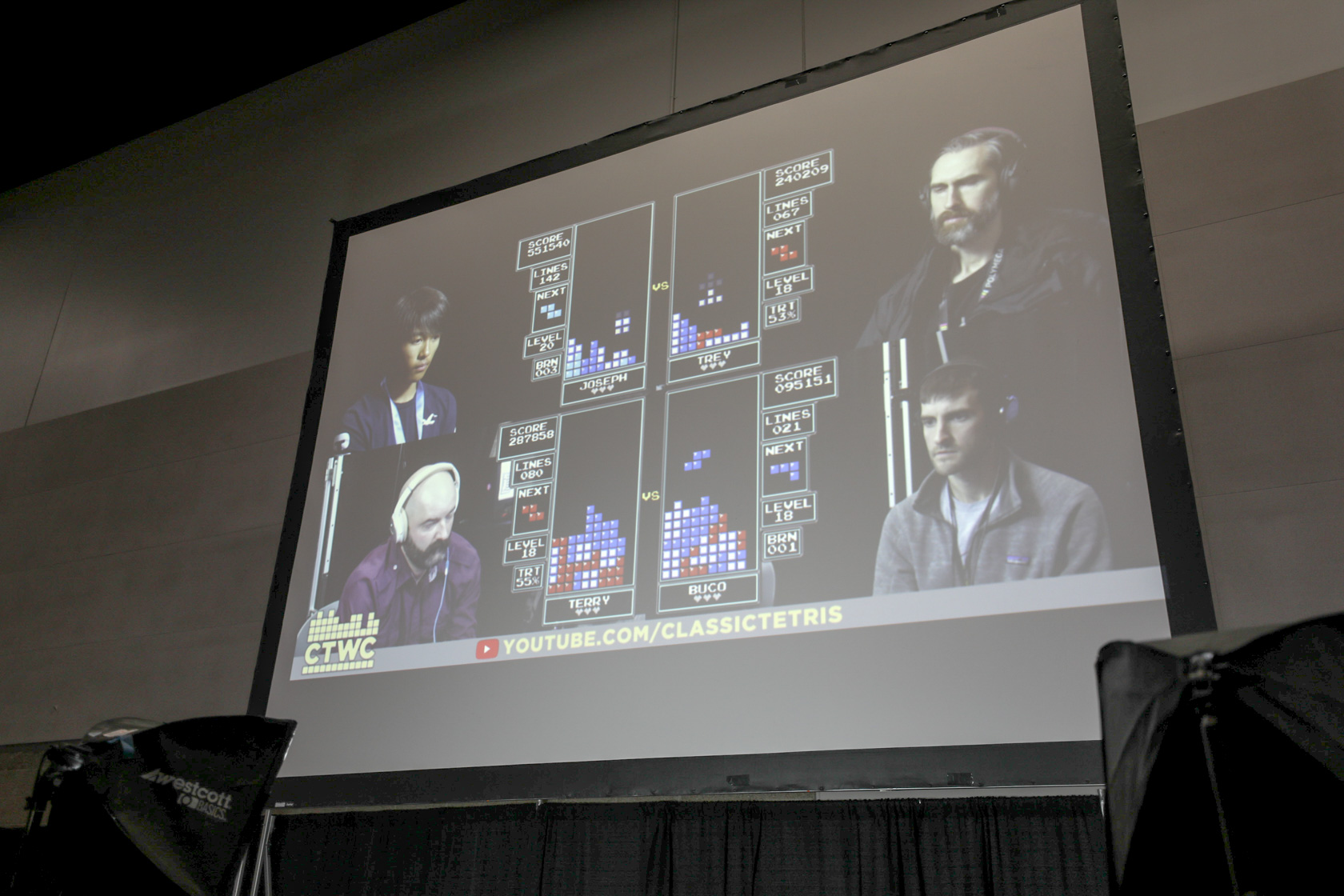
The large screen visible to all competitors and spectators. The player in the top left, Joseph, won the tournament the next day.
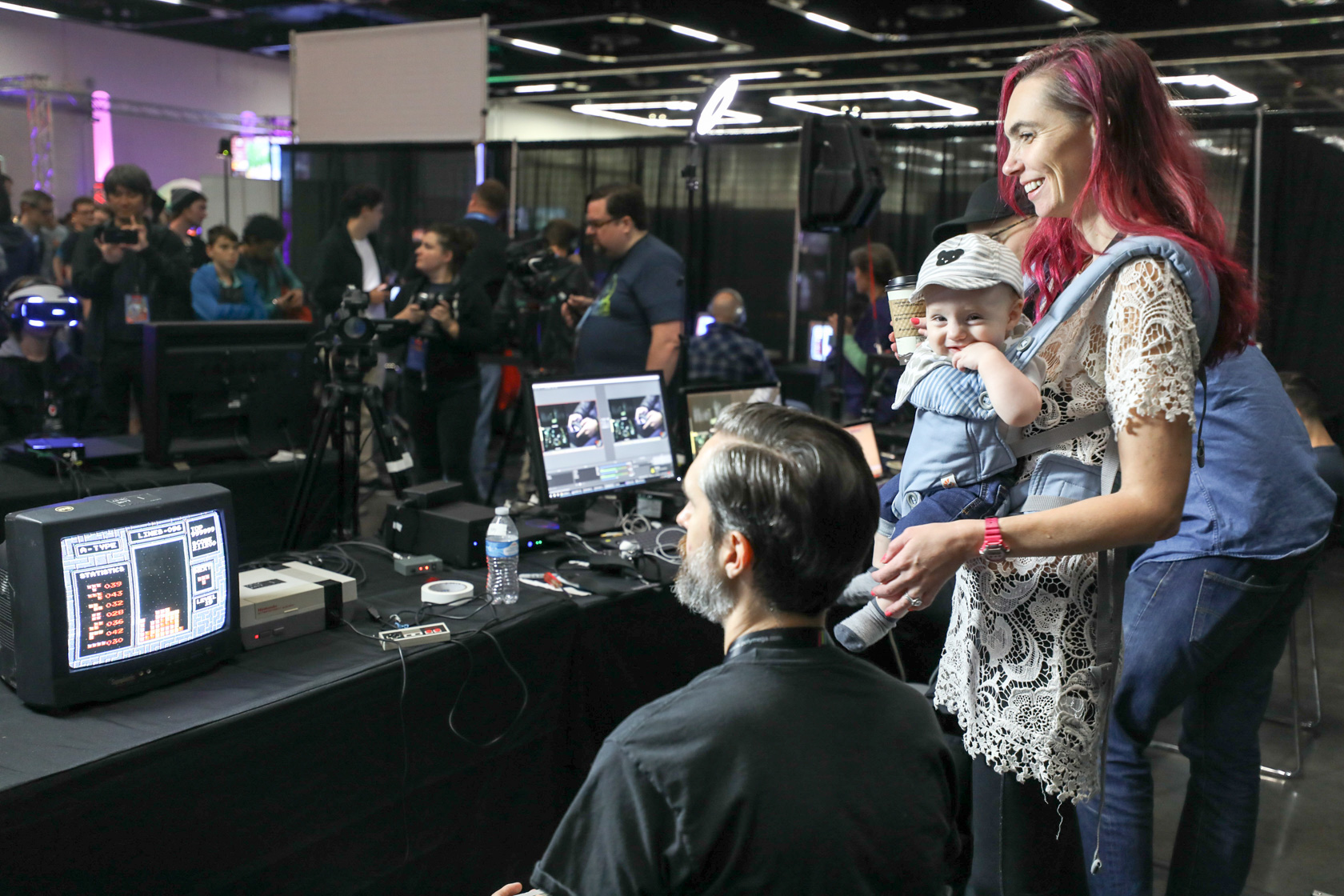
For some players, the event is a family affair.
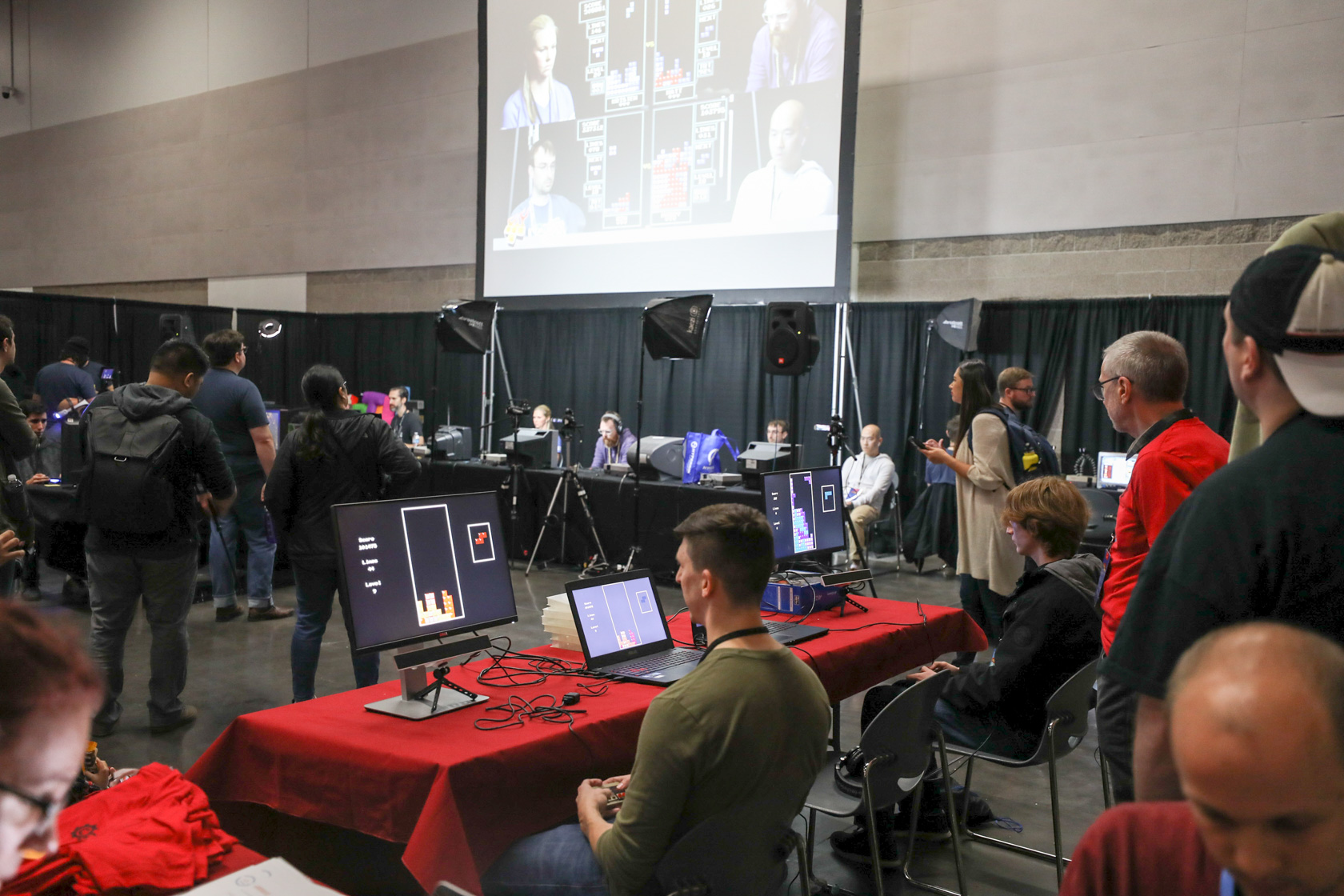
In the midst of all this, on the side of the event, the RPI researchers collect their data.
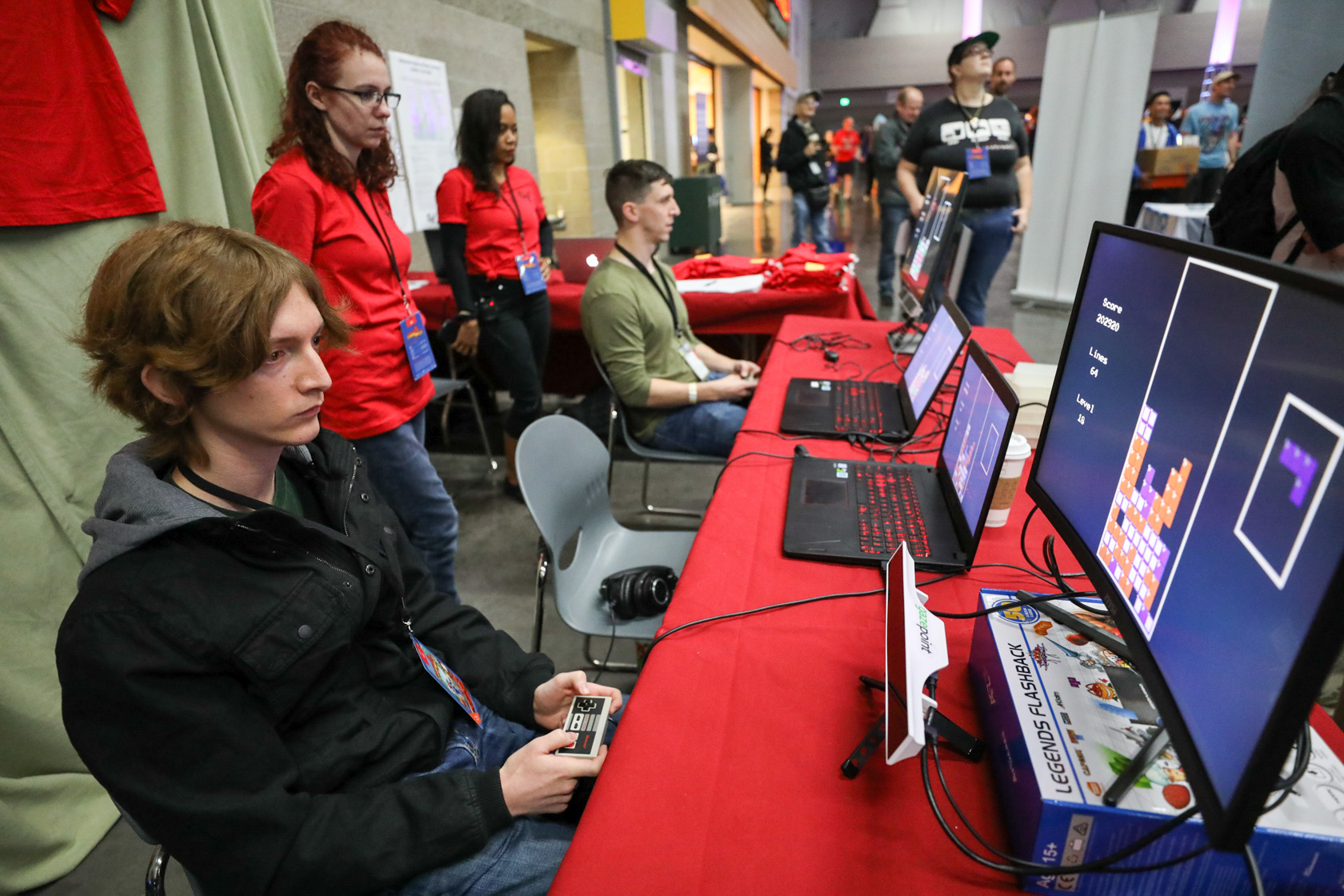
Catherine Sibert and Dr. Berry monitor a couple participants. Note the Gazepoint eye tracker on a small tripod on the table.
The experimenters are capturing all of the participants' actions, including their eye movements, using a specially instrumented version of Tetris
created in their lab at RPI.

Catherine calibrates the eye tracker to a participant.
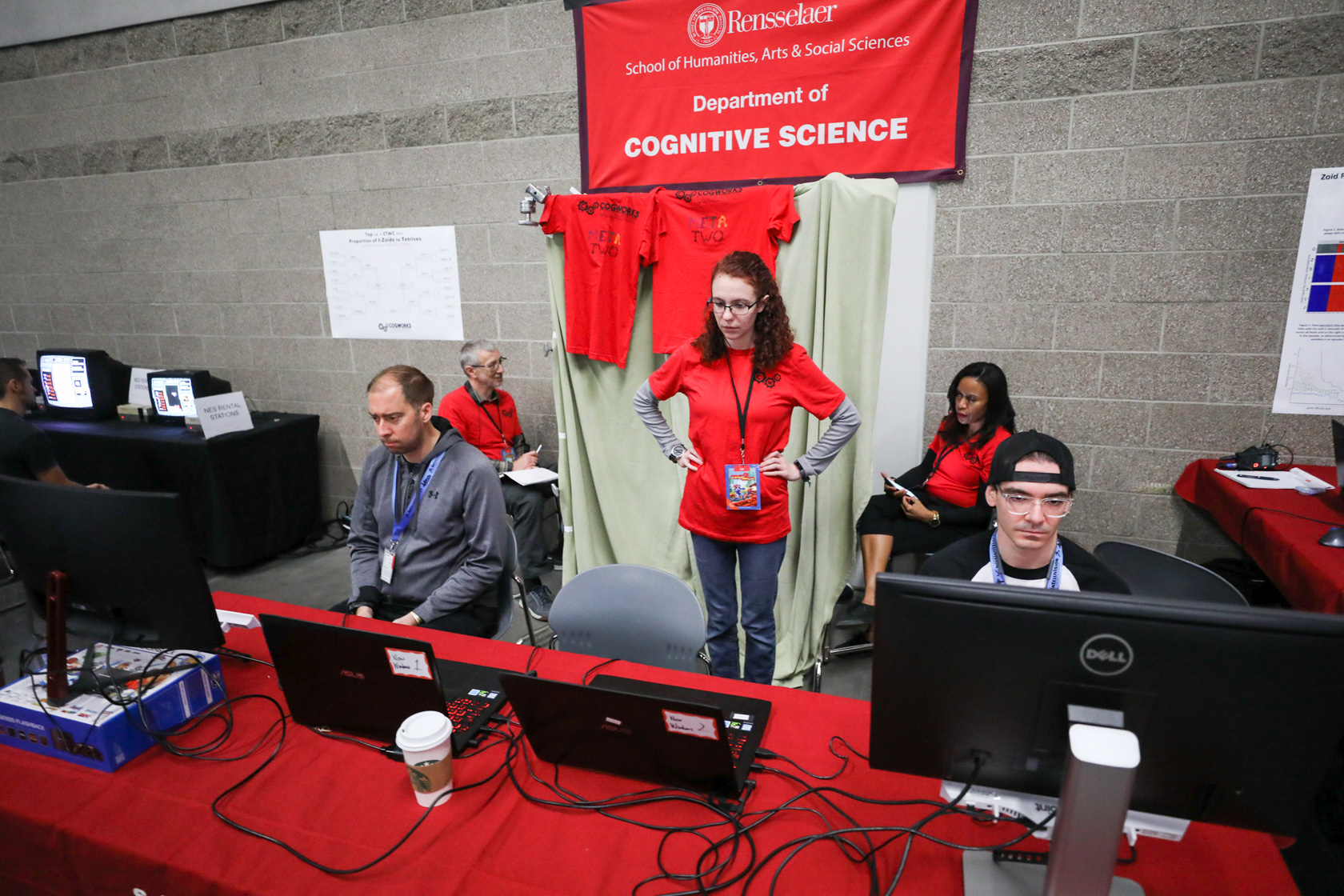
Catherine monitors two participant while Drs. Gray and Berry staff two interview stations in which participants are
interviewed as part of the experiment. The interviews are recorded using wireless lavalier microphones. The curtains
are one of several measures taken to reduce the background noise in the recordings. The expo is quite loud,
with music playing from overhead speakers throughout the day.
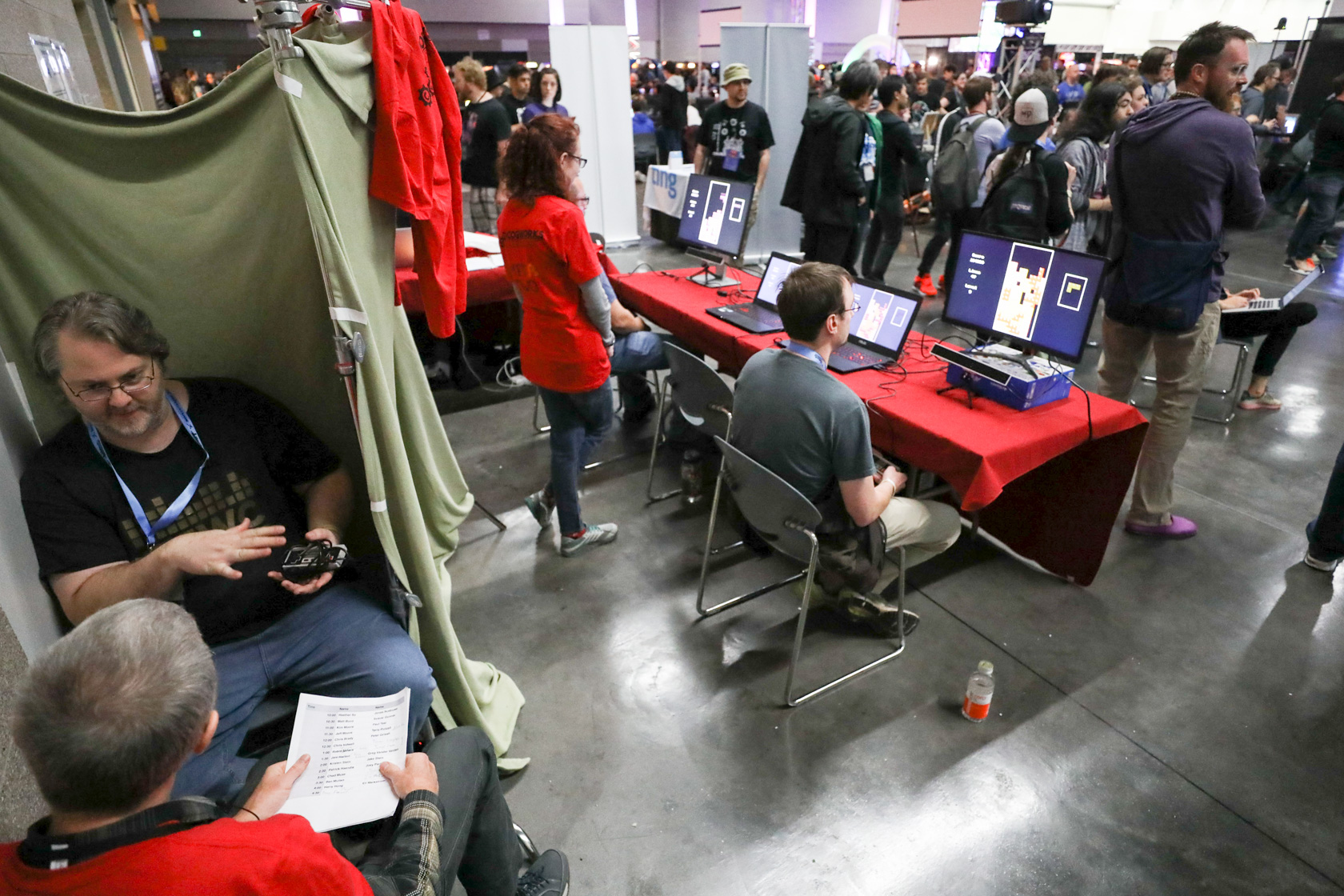
Here, an interviewee explains to Dr. Gray the importance of his particular controller. Many of the competitors bring
and use their own input devices (which they buy on eBay, for example) and plug into the tournament machines.
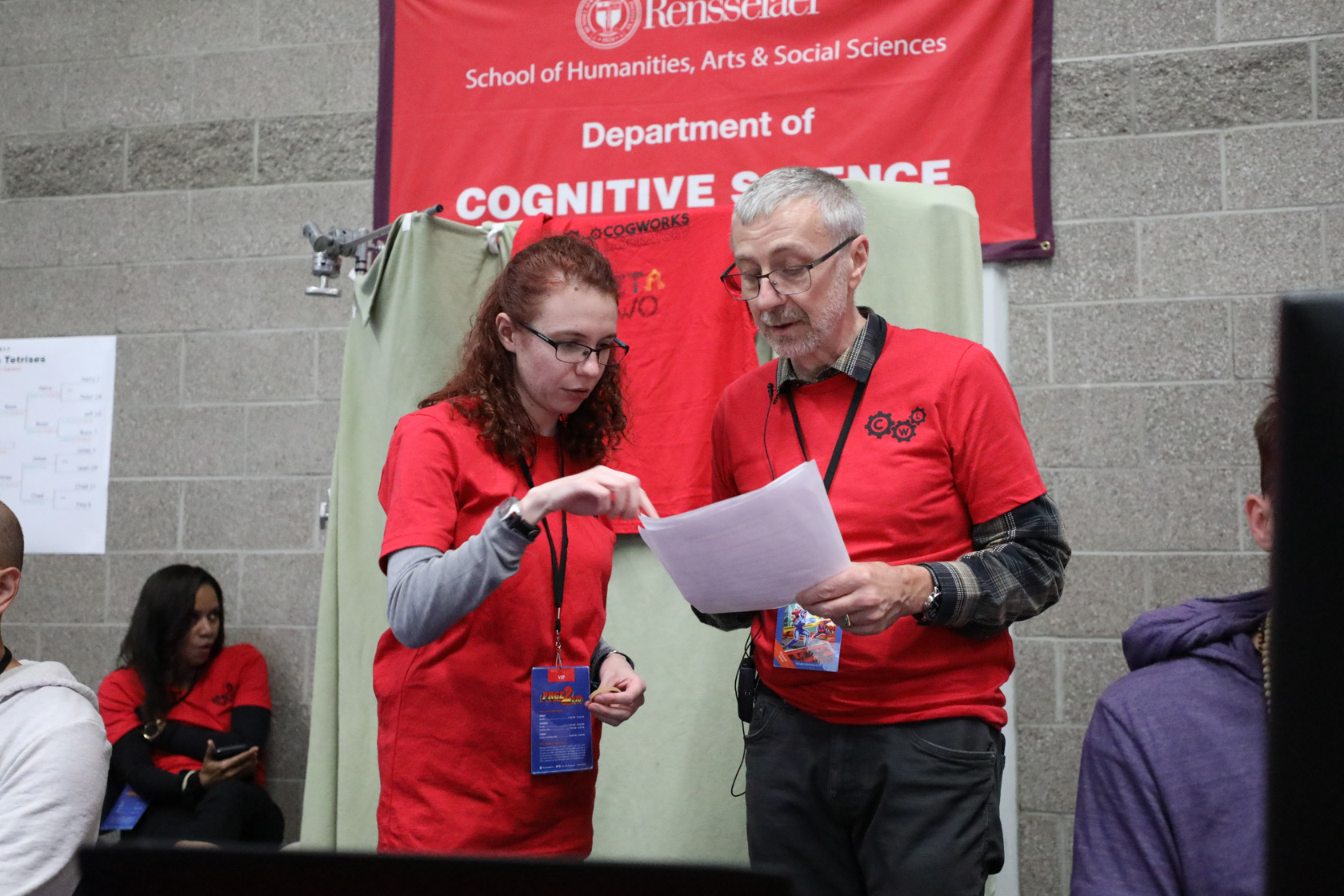
Catherine and Dr. Gray review the list of scheduled participants, all of whom signed up in advance of the event.

The Tetris tournament, and research booth, sit in a corner of the Portland Retro Gaming Expo.
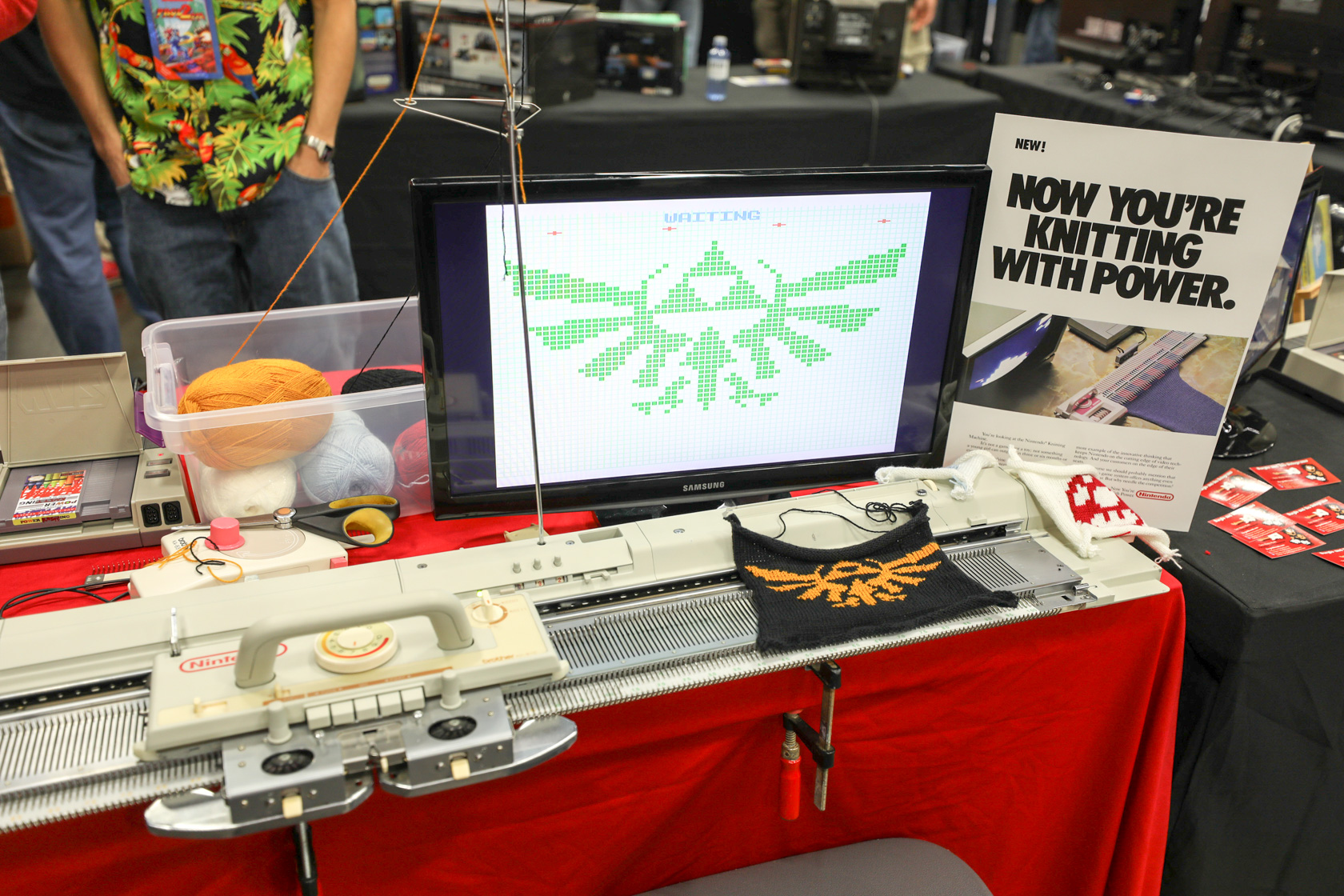
One of many interesting devices on display at the larger convention, a Nintendo knitting machine that presaged the current "maker spaces."
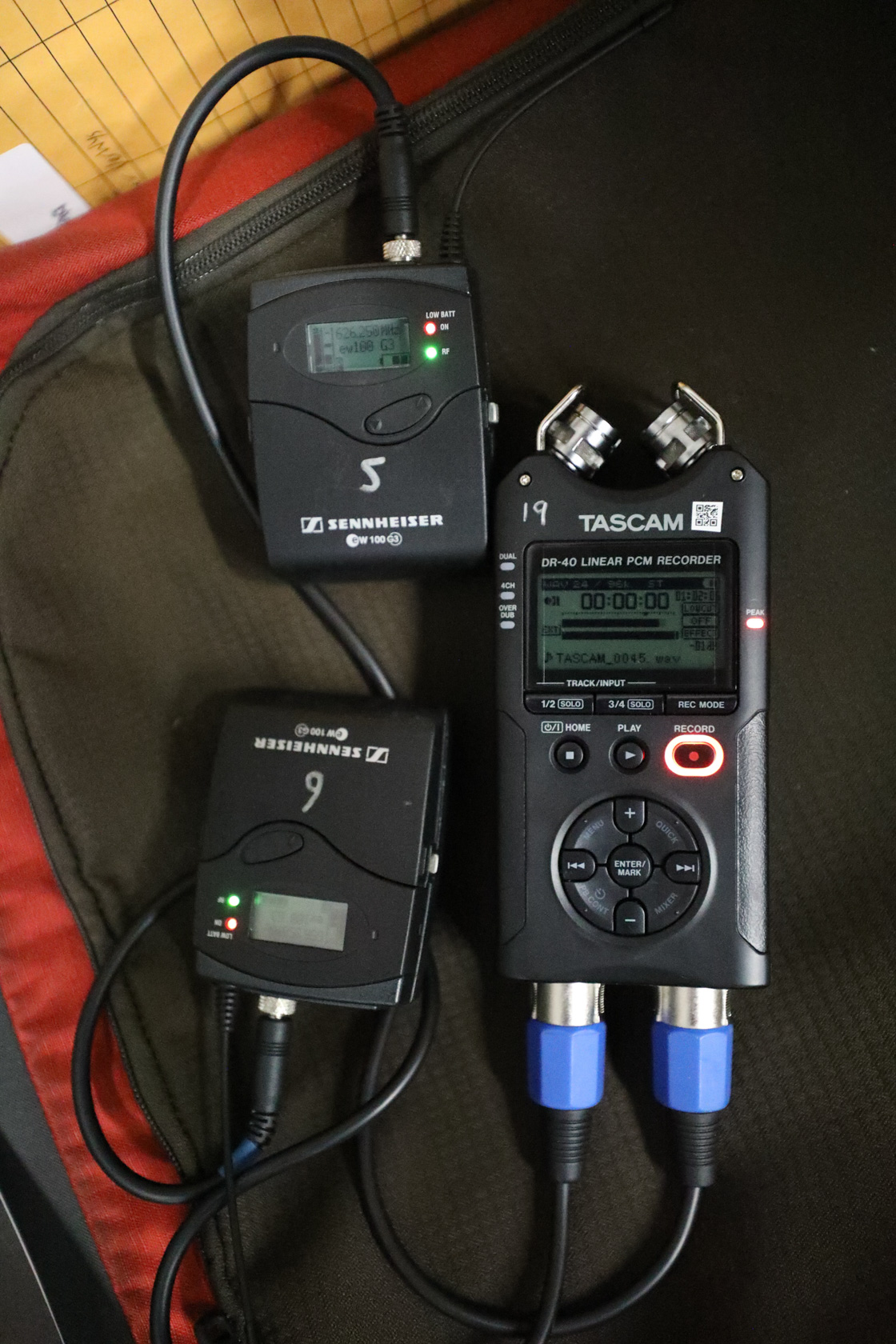
The recording equipment used for the interviews.
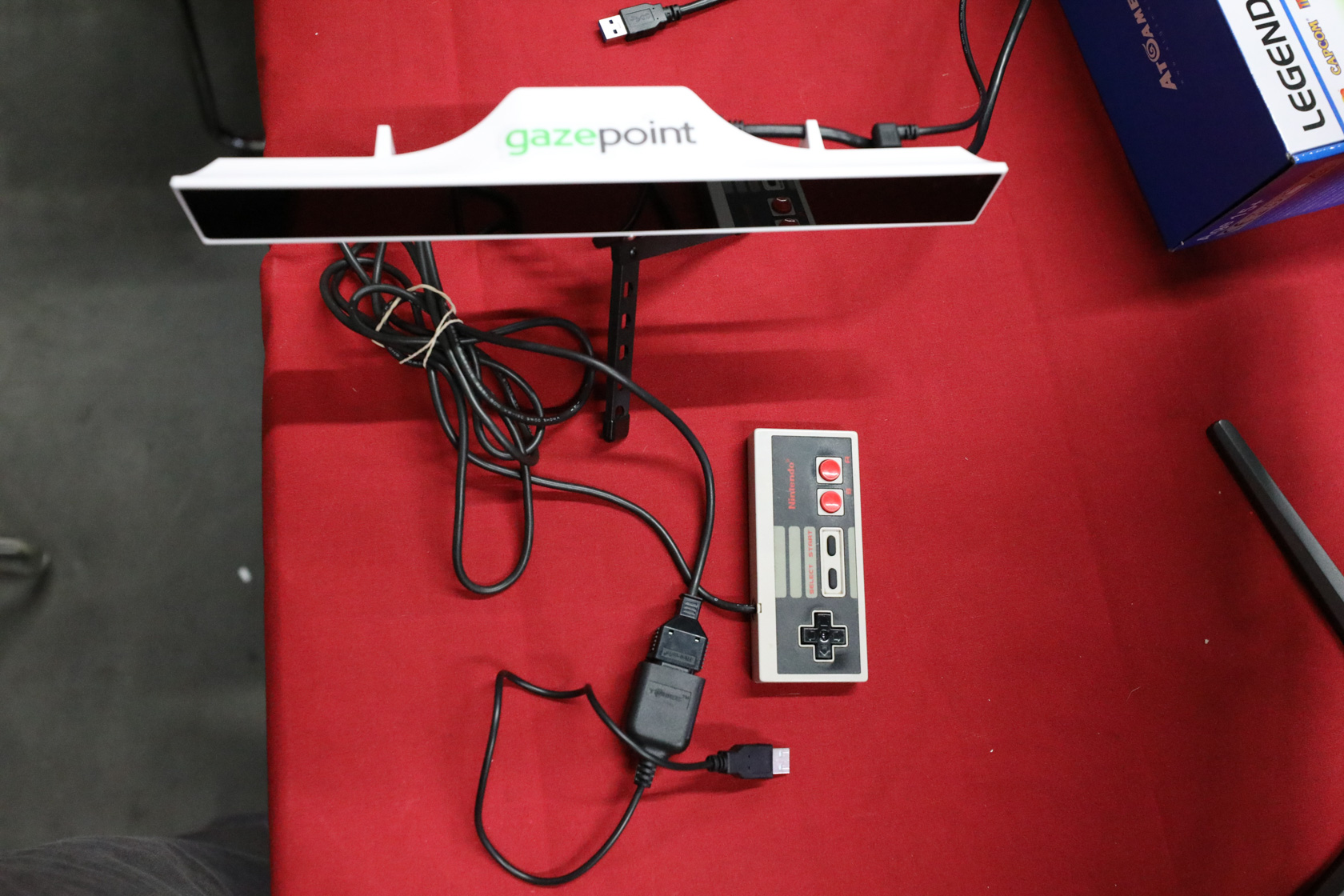
The eye tracker, an antique controller, and a USB adapter for the controller.
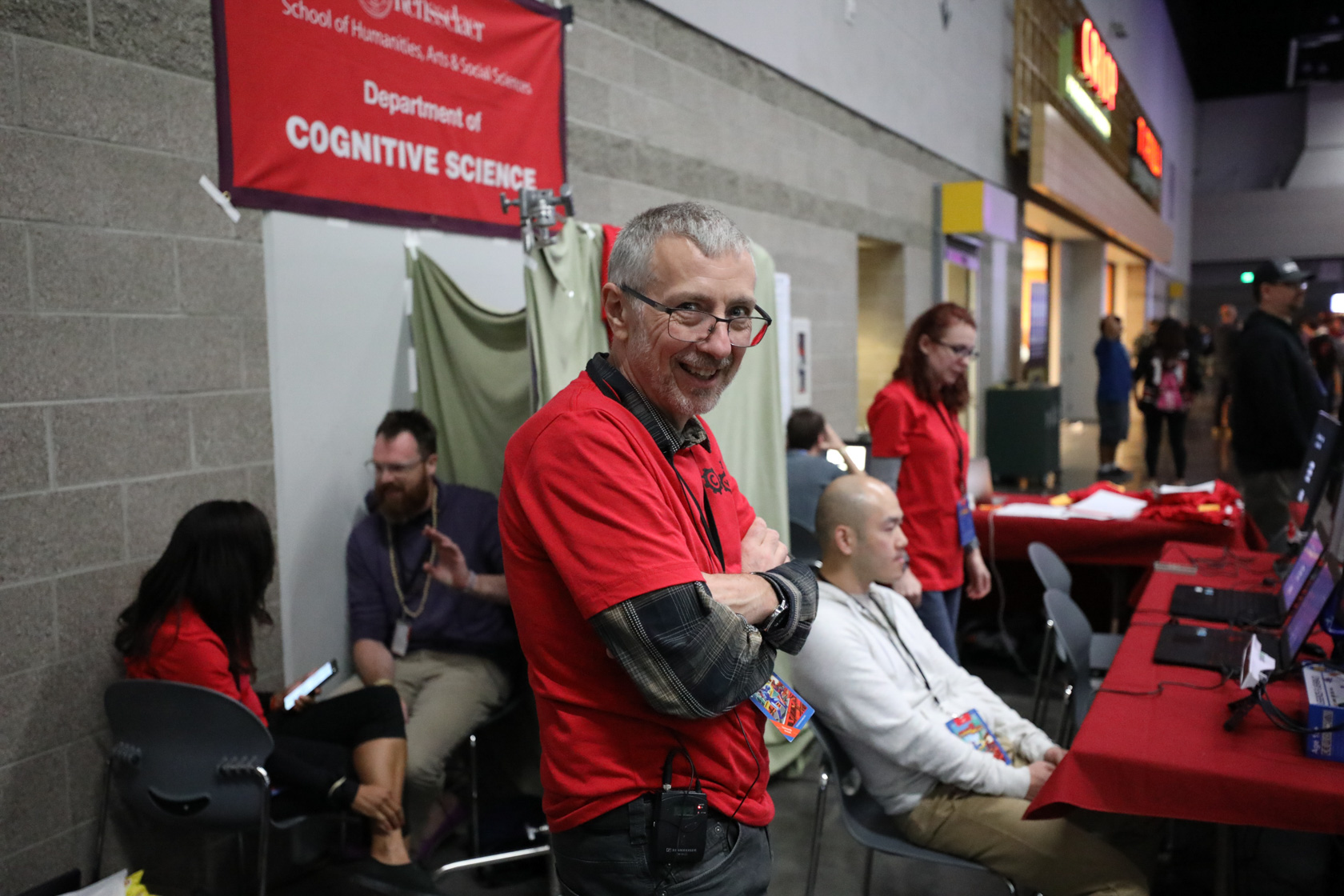
Cognitive scientist Dr. Gray has been studying expert behavior for decades, and now focuses his analysis of human performance on the world's
best performers of the highly focused perceptual-motor task of Tetris. The skills and strategies required for Tetris have much in common with those used for complex time-pressured real-world tasks such as air traffic control, flying commercial aircraft, and coordinating complex search and rescue activities. Tetris can reveal fundamental truths of human performance that can be used to build psychological theory and applied to the design of complex human-machine systems.
